
Warning: Your Bank's Talent Strategy Is Now Obsolete. A Look Inside HKMA's 2026-2030 Guidelines.
Read the full "Capacity Building for Future Banking, 2026 – 2030" guidelines
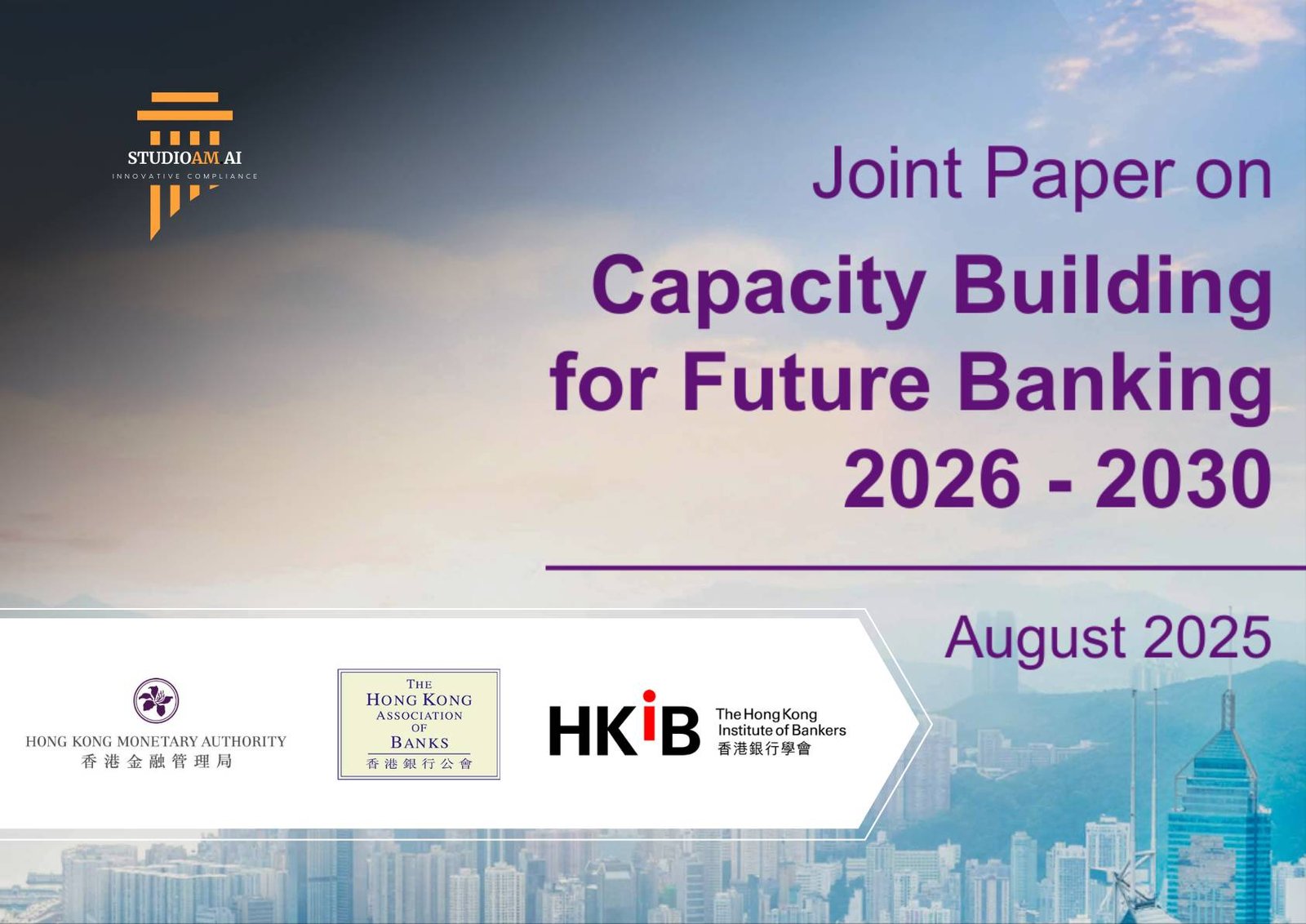
Introduction
The Hong Kong Monetary Authority (HKMA), in collaboration with the Hong Kong Association of Banks (HKAB) and the Hong Kong Institute of Bankers (HKIB), has unveiled a forward-looking roadmap for the banking industry: the “Capacity Building for Future Banking, 2026 – 2030” guidelines [1]. This joint paper, a sequel to the 2020 study, signals a pivotal shift in the regulatory landscape, moving beyond traditional training paradigms to a holistic, technology-driven approach to workforce development. For banks and financial institutions, these guidelines are not merely a set of recommendations but a strategic imperative that will shape their competitive standing, operational resilience, and long-term sustainability.
This in-depth analysis explores the profound impact of these new guidelines, offering a comprehensive overview for compliance-focused firms and financial institutions. We will dissect the core components of the framework, examine the operational and financial implications, and highlight the critical role of Compliance-as-a-Service (CaaS) in navigating this new era of banking.
The Three Pillars of Future Banking Capacity
The 2026-2030 guidelines identify three critical skill areas that will form the bedrock of the future banking workforce. These pillars represent a significant evolution from the previous framework, reflecting the accelerated pace of technological advancement and the growing importance of sustainable finance.
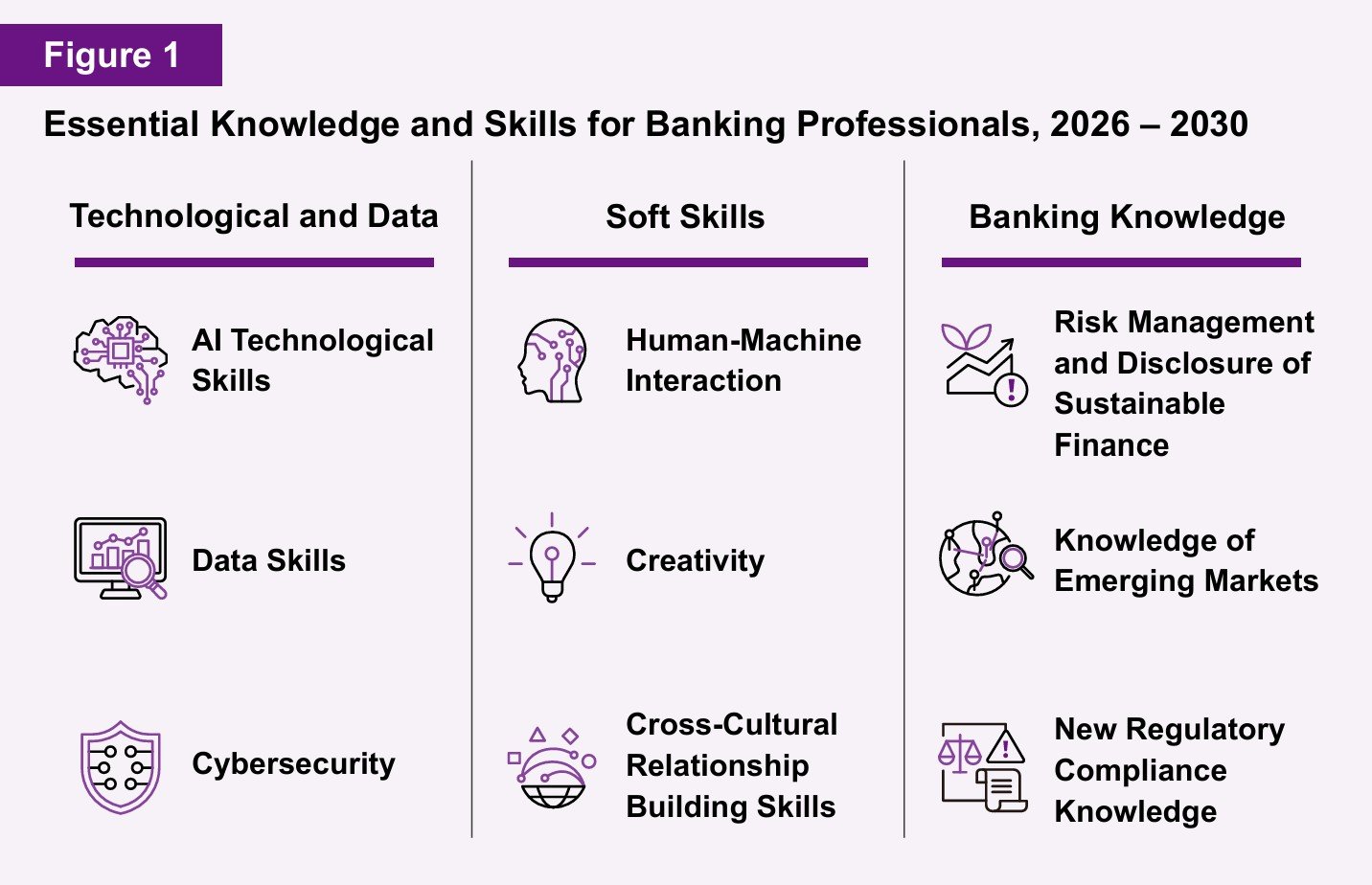
Source 1: Capacity Building for Future Banking 2026 - 2030
Pillar 1: Specialist Technical Skills
Key Skill Areas: AI, Data, and Cybersecurity
Description: The focus has shifted from traditional software development to the application of artificial intelligence (AI), data architecture, quantum computing, and advanced cybersecurity. This requires a new breed of banking professionals who can not only use but also develop and manage these sophisticated technologies.
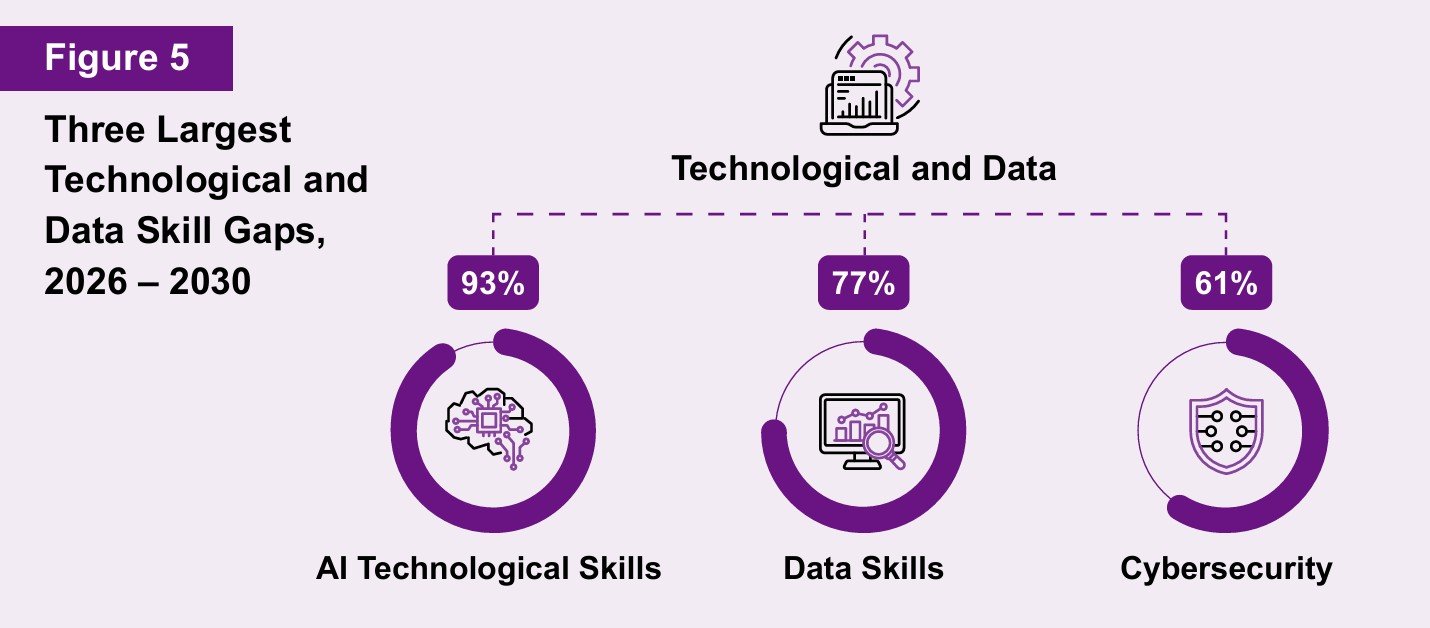
Source 2: Capacity Building for Future Banking 2026 - 2030.
Pillar 2: Human-Machine Interaction
Key Skill Areas: Adaptability, Prompt Engineering, Creativity
Description: As AI becomes more integrated into banking operations, the ability to collaborate effectively with machines is paramount. This includes skills in prompt engineering for AI interaction, creativity in problem-solving, and cross-cultural relationship building in a digitally connected world.
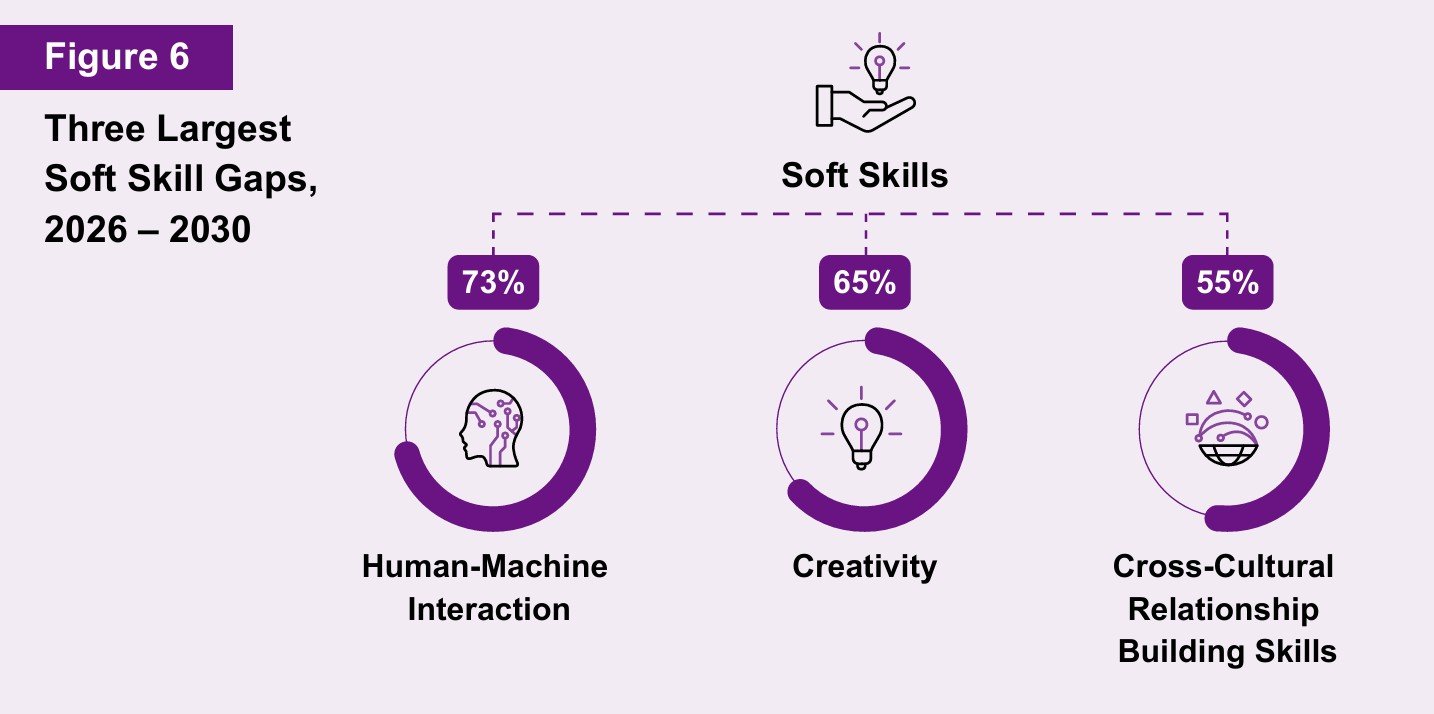
Source 3: Capacity Building for Future Banking 2026 - 2030.
Pillar 3: Sustainable Finance & Emerging Markets
Key Skill Areas: ESG Risk Management, Regulatory Compliance
Description: The guidelines emphasize the growing importance of sustainable finance, requiring deep expertise in Environmental, Social, and Governance (ESG) risk management, as well as knowledge of emerging markets like the ASEAN and Middle Eastern economies.
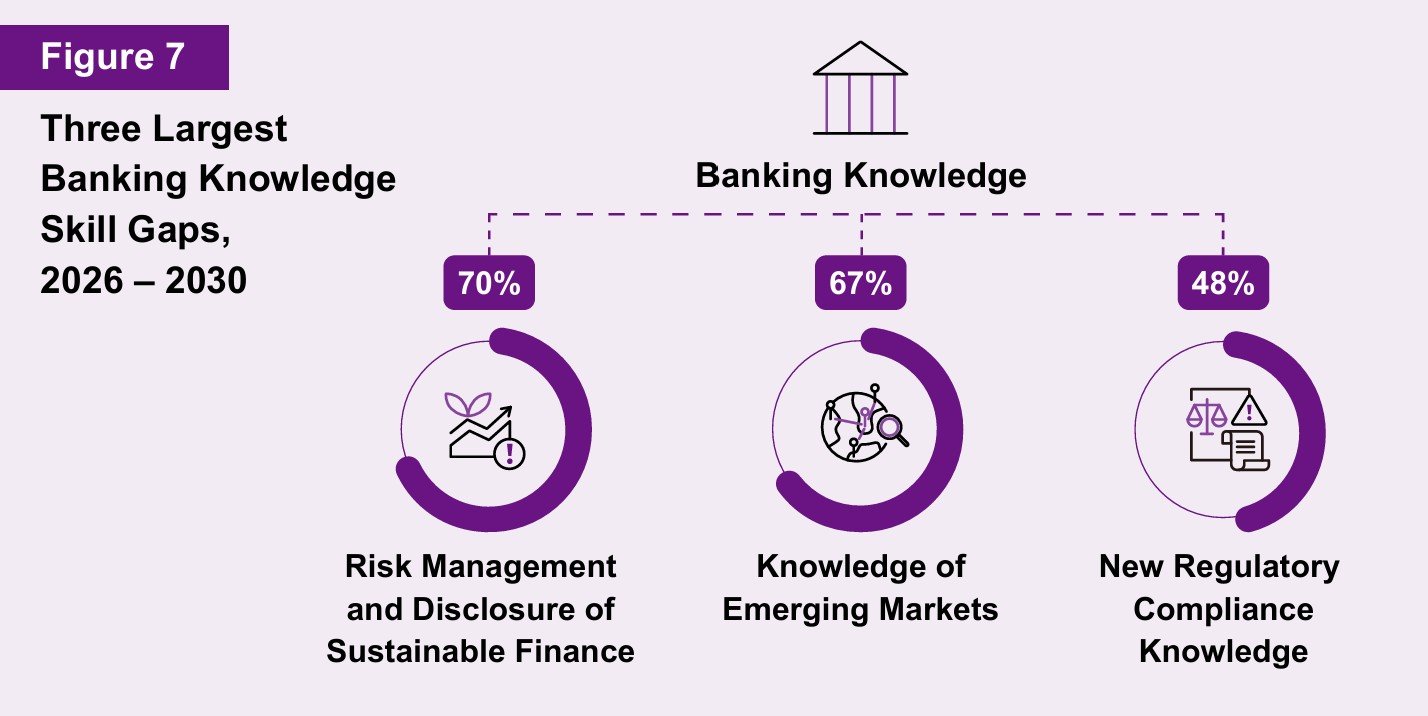
Source 4: Capacity Building for Future Banking 2026 - 2030.
The Tectonic Shift: Impact on Financial Institutions
The implications of these guidelines are far-reaching, touching every facet of a financial institution's operations. Banks must now embark on a journey of profound transformation to align with the HKMA's vision for the future.
Operational Transformation
The integration of AI and other advanced technologies necessitates a fundamental rewiring of banking operations. As McKinsey notes, banks must move beyond isolated use cases to an enterprise-wide AI transformation [2]. This involves:
“rewiring entire domains and subdomains. Instead of letting a thousand flowers bloom with many disparate, siloed AI projects, leading banks are using AI to reimagine entire business domains—such as risk, sales, and operations—and within them, subdomains such as relationship management, collections, and contact-center servicing and operations.” [2]
This transformation requires significant investment in technology infrastructure, including robust data governance frameworks, multi-agent AI systems, and enhanced cybersecurity measures. The workforce must also be restructured to foster cross-functional teams that blend deep banking expertise with technical skills.
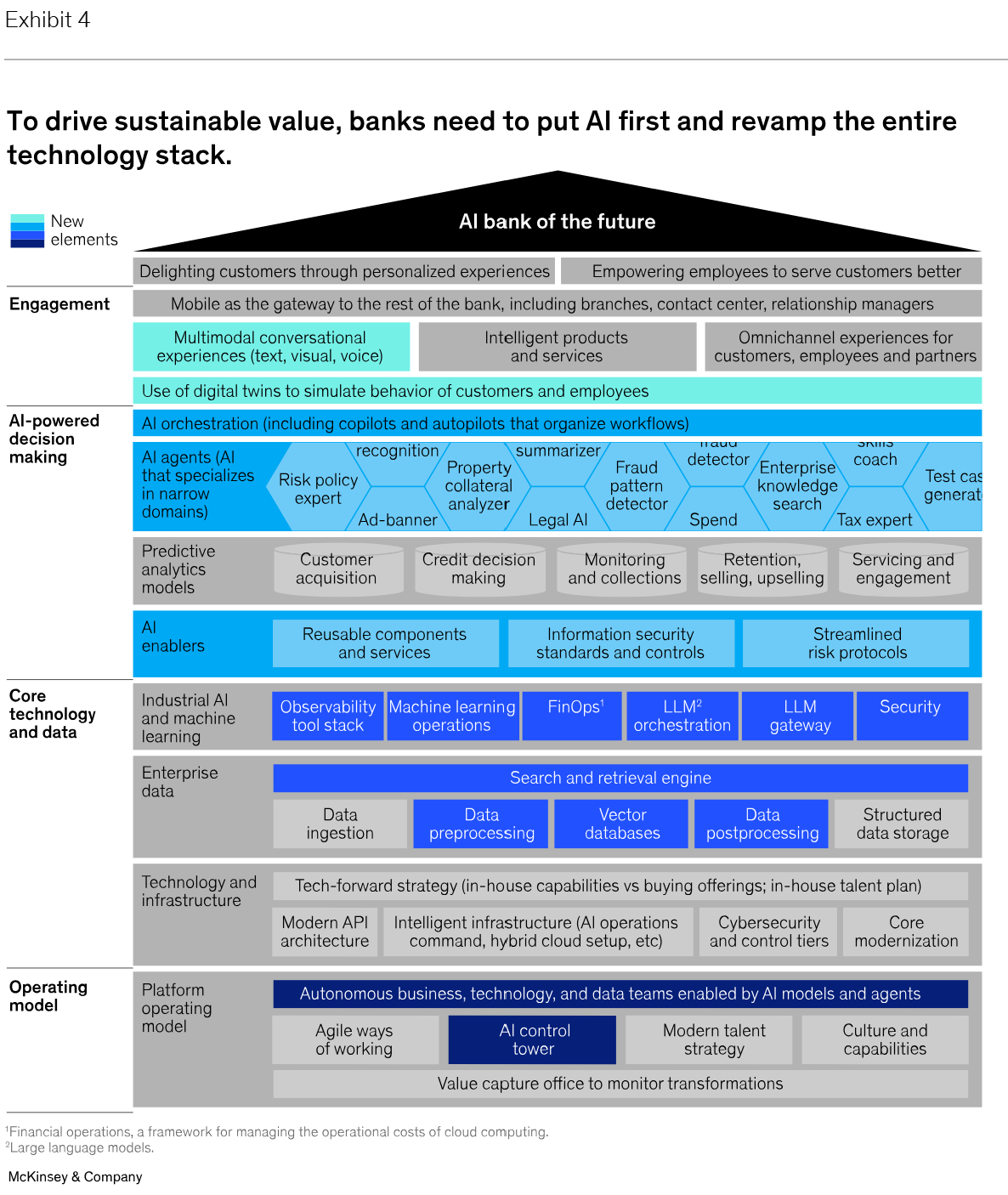
Source 5: McKinsey & Company "Extracting value from AI in banking", 2024
Financial Implications
The transition to a future-ready workforce comes with substantial financial commitments. Banks must allocate significant resources to:
- Comprehensive Training Programs: Moving away from ad-hoc training to holistic, continuous learning programs will increase per-employee training costs.
- Technology Infrastructure: The banking industry's projected investment of $31.3 billion in AI in 2024 underscores the scale of investment required [3].
- Talent Acquisition: The demand for professionals with specialized skills in AI, sustainable finance, and cybersecurity will drive up recruitment and retention costs.
However, the return on investment is equally compelling. As demonstrated by early adopters of AI, the benefits include enhanced operational efficiency, improved customer experience, and significant cost savings. For instance, Bank of America reported 26 billion digital interactions in 2024, a 12% year-over-year increase, with 676 million interactions handled by its AI assistant, “Erica” [4]. Similarly, NatWest's AI assistant, “Cora,” managed 11.2 million customer conversations in 2024, a volume equivalent to all interactions handled by its call centers and branches combined [4].
Competitive Landscape
In the competitive arena, the new guidelines will create a clear distinction between early adopters and laggards. Banks that proactively embrace capacity building will gain a significant first-mover advantage in talent acquisition, customer experience, and operational efficiency. Furthermore, expertise in sustainable finance and emerging markets will be a key differentiator in an increasingly globalized financial landscape.
Navigating the New Landscape: The Role of CaaS
For compliance-focused firms, the HKMA's new guidelines present both a challenge and an opportunity. The traditional scope of compliance is expanding to include human capital development, requiring a more sophisticated and technology-driven approach. This is where Compliance-as-a-Service (CaaS) can play a pivotal role.
CaaS providers can assist financial institutions in navigating this new landscape by offering a range of services, including:
- Workforce Development Audits: Assessing a bank's compliance with the new capacity building requirements.
- Training Program Evaluation: Evaluating the effectiveness and regulatory alignment of training programs.
- AI Governance Frameworks: Developing robust governance structures for the implementation of AI in banking.
- Sustainable Finance Compliance: Providing specialized expertise in ESG regulatory compliance.
By leveraging CaaS, banks can ensure they meet the HKMA's expectations while focusing on their core business objectives.
Case Studies in Transformation
The journey towards a future-ready banking workforce is already underway, with several financial institutions demonstrating measurable success in AI implementation and digital transformation:
Bank of America has achieved remarkable scale in digital engagement, with 26 billion digital interactions in 2024, representing a 12% year-over-year increase [4]. The bank's AI virtual assistant "Erica" alone handled 676 million interactions, demonstrating the practical impact of human-machine collaboration in banking operations.
NatWest has similarly transformed its customer service capabilities through AI integration. The bank's AI assistant "Cora" managed 11.2 million customer conversations in 2024, a volume roughly equivalent to all interactions handled by the bank's call centers and branches combined [4]. Notably, the integration of generative AI capabilities boosted customer satisfaction scores by 150%, while significantly reducing the need for human agent intervention [4].
M&T Bank has adopted nCino's Continuous Credit Monitoring system, which leverages explainable AI to provide comprehensive credit risk insights [4]. This implementation demonstrates how banks are moving beyond simple automation to sophisticated AI-driven decision support systems.
These verified examples illustrate the tangible benefits of comprehensive capacity building programs that integrate AI capabilities with human expertise, creating more efficient, scalable, and customer-centric banking operations.
Conclusion
The HKMA's “Capacity Building for Future Banking, 2026 – 2030” guidelines are a clarion call for the banking industry to embrace change and prepare for a future defined by technology, sustainability, and global interconnectedness. The path to transformation will be challenging, requiring significant investment, strategic planning, and a commitment to continuous learning. However, the rewards for those who successfully navigate this journey will be immense, leading to enhanced competitiveness, improved profitability, and a more resilient and sustainable banking sector.
As the regulatory landscape continues to evolve, the role of CaaS will become increasingly critical. By partnering with specialized compliance providers, financial institutions can ensure they not only meet their regulatory obligations but also thrive in the new era of banking.
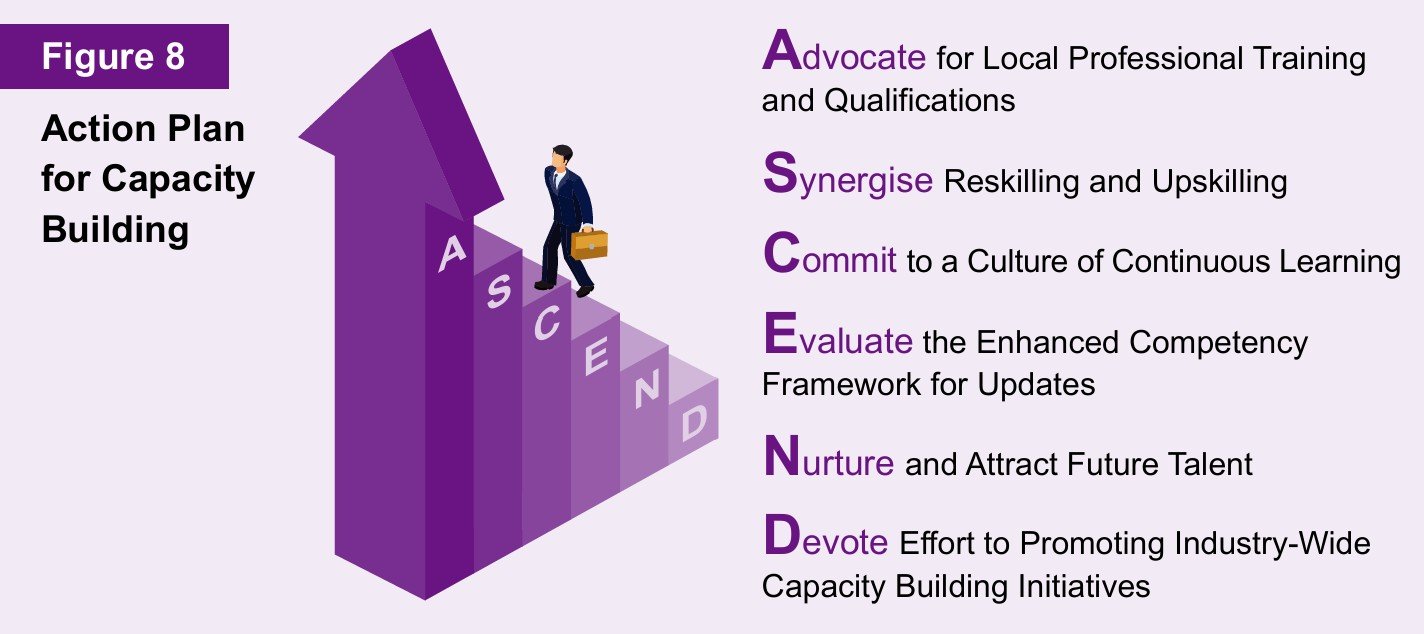
Source 6: Capacity Building for Future Banking 2026 - 2030
References
- Hong Kong Monetary Authority, Hong Kong Association of Banks, and Hong Kong Institute of Bankers. (2025, August). Joint Paper on Capacity Building for Future Banking 2026 – 2030. Retrieved from the provided document.
- McKinsey & Company. (2024, December 9). Extracting value from AI in banking: Rewiring the enterprise. Retrieved from https://www.mckinsey.com/industries/financial-services/our-insights/extracting-value-from-ai-in-banking-rewiring-the-enterprise
- IDC. (2024). Worldwide Artificial Intelligence Spending Guide. As cited in Finextra. (2025, July 7). AI Becomes the Banker: 21 Case Studies Transforming Digital Banking CX. Retrieved from https://www.finextra.com/blogposting/28841/ai-becomes-the-banker-21-case-studies-transforming-digital-banking-cx
- Finextra. (2025, July 7). AI Becomes the Banker: 21 Case Studies Transforming Digital Banking CX. Retrieved from https://www.finextra.com/blogposting/28841/ai-becomes-the-banker-21-case-studies-transforming-digital-banking-cx
- Hong Kong Monetary Authority. (2025, August 18). Circular: Capacity Building for Future Banking, 2026 – 2030. Retrieved from the provided document.
- Women in Sustainable Finance. (2025, January 8). Sustainability Regulations: Quarterly Update Q4-2024. Retrieved from https://www.wisfinternational.com/post/sustainability-regulations-quarterly-update-q4-2024



